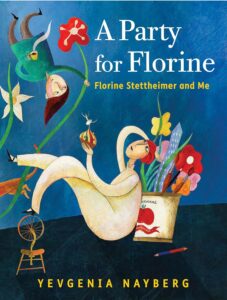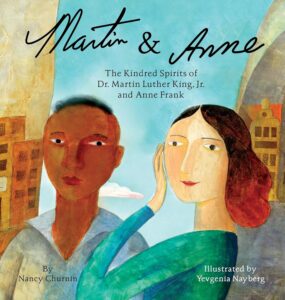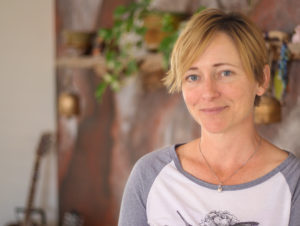**Now that my older kid is done with college for a few months, I was able to get her to handle this bonus blog post. Thanks, Valerie!**
With Mother’s Day just around the corner, it seems like the right time to offer a list of sweet picture books featuring moms.
Did I miss your favorite? Tell me in the comments if so!
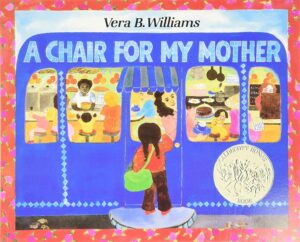 A Chair for My Mother by Vera B. Williams (January 2007)
A Chair for My Mother by Vera B. Williams (January 2007)
From Goodreads: “After their home is destroyed by a fire, Rosa, her mother and grandmother save their coins to buy a really comfortable chair for all to enjoy.”
Pages: 32
Reading Age: 3–12
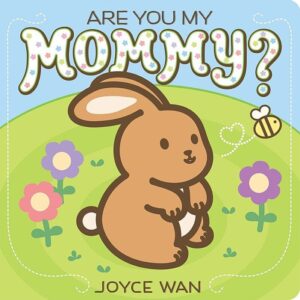 Are You My Mommy? by Joyce Wan (December 2014)
Are You My Mommy? by Joyce Wan (December 2014)
From Goodreads: “The creator of YOU ARE MY CUPCAKE returns with a cuddly story all about baby animals and their mommies! Join an adorable little bunny on the search for Mommy all around the farm yard. Each spread includes cleverly imagined die-cuts to help readers guess what animal the bunny might encounter next! With Joyce’s iconic and adorable illustrations, this is an irresistible story for mommies and babies to read again and again!”
Pages: 32
Reading Age: 3–8
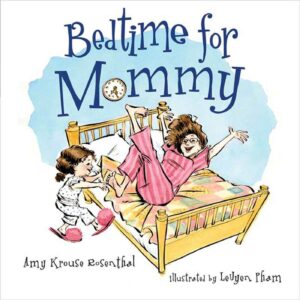 Bedtime for Mommy by Amy Krouse Rosenthal (April 2010)
Bedtime for Mommy by Amy Krouse Rosenthal (April 2010)
From Goodreads: “Bestselling and beloved author Amy Krouse Rosenthal teams up with bestselling illustrator LeUyen Pham to put a funny and charming spin on bedtime.
When it’s Mommy’s bedtime, she begs her little girl –
“Five more minutes?”
“Ok, but then brush your teeth!”
But then Mommy wants another glass of water … another story … luckily this little girl is very patient!
A hilarious reversal of the classic bedtime routine in which a little girl puts Mommy (and then Daddy) to bed.”
Pages: 32
Reading Age: 2–5
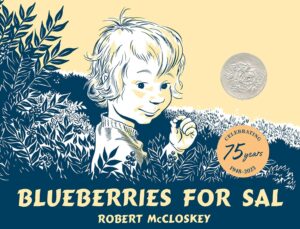 Blueberries for Sal by Robert McCloskey (September 1948)
Blueberries for Sal by Robert McCloskey (September 1948)
From Goodreads: “What happens when Sal and her mother meet a mother bear and her cub? A beloved classic is born!
Kuplink, kuplank, kuplunk! Sal and her mother are picking blueberries to can for the winter. But when Sal wanders to the other side of Blueberry Hill, she discovers a mama bear preparing for her own long winter. Meanwhile Sal’s mother is being followed by a small bear with a big appetite for berries! Will each mother go home with the right little one?
With its expressive line drawings and charming story, Blueberries for Sal has won readers’ hearts since its first publication in 1948.”
Pages: 55
Reading Age: 2–5
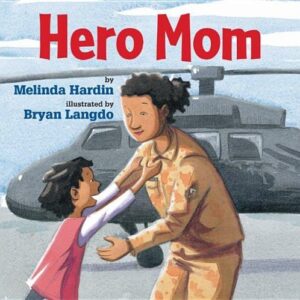 Hero Mom by Melinda Hardin, illustrated by Bryan Langdo (April 2013)
Hero Mom by Melinda Hardin, illustrated by Bryan Langdo (April 2013)
From Goodreads: “The moms in the book are superheroes. They may not leap over tall buildings, and they may not have super-human speed. But these moms construct buildings, fly planes, and make tanks roll. They do all kinds of things to help create a safer world. These superheroes are moms. Military moms. Hero moms.”
Pages: 24
Reading Age: 4–6
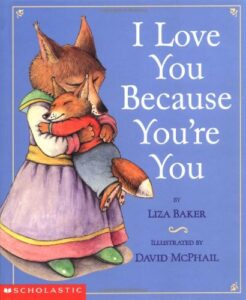 I Love You Because You’re You by Liza Baker, illustrated David McPhail (October 2001)
I Love You Because You’re You by Liza Baker, illustrated David McPhail (October 2001)
From Goodreads: “Describes, in rhyming text and illustrations, a mother fox’s love for her child no matter how he feels or what he does. By the illustrator of If You Were My Bunny.”
Pages: 32
Reading Age: 1–3
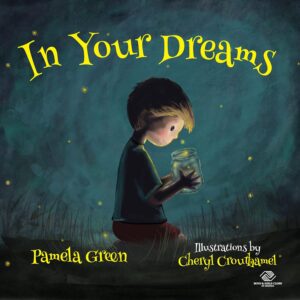 In Your Dreams by Pamela Green, illustrated by Cheryl Crouthamel (May 2023)
In Your Dreams by Pamela Green, illustrated by Cheryl Crouthamel (May 2023)
From Goodreads: “As a mother holds her sleeping baby, she ponders the dreams dancing through his head.
Has he traveled back in time to play with the dinosaurs? Is he climbing tall mountains among the clouds? Is he watching dolphins frolic in the sea, or visiting new friends in faraway places?
Told in gentle rhymes with whimsical illustrations to spark the imaginations of children of all ages, this sweet and timeless book is a story of curiosity, possibility, and, above all, the wonder of love.”
Pages: 32
Reading Age: 1–5
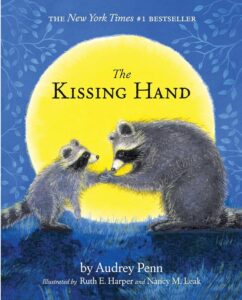 The Kissing Hand by Audrey Penn, illustrated by Ruth E. Harper and Nancy M. Leak (October 1993)
The Kissing Hand by Audrey Penn, illustrated by Ruth E. Harper and Nancy M. Leak (October 1993)
From Goodreads: “Chester Raccoon doesn’t want to go to school–he wants to stay home with his mother. She assures him that he’ll love school–with its promise of new friends, new toys, and new books. Even better, she has a special secret that’s been in the family for years–the Kissing Hand. This secret, she tells him, will make school seem as cozy as home. She takes her son’s hand, spreads his tiny fingers into a fan and kisses his palm–smack dab in the middle: “Chester felt his mother’s kiss rush from his hand, up his arm, and into his heart.” Whenever he feels lonely at school, all he has to do is press his hand to his cheek to feel the warmth of his mother’s kiss. Chester is so pleased with his Kissing Hand that he–in a genuinely touching moment–gives his mom a Kissing Hand, too, to comfort her when he is away. Audrey Penn’s The Kissing Hand, published by the Child Welfare League of America, is just the right book for any child taking that fledgling plunge into preschool–or for any youngster who is temporarily separated from home or loved ones. The rough but endearing raccoon illustrations are as satisfying and soothing for anxious children as the simple story.”
Pages: 32
Reading Age: 2–6
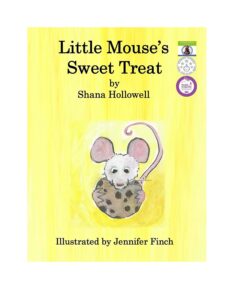 Little Mouse’s Sweet Treat by Shana Hollowell (September 2016)
Little Mouse’s Sweet Treat by Shana Hollowell (September 2016)
From Goodreads: “A little mouse that goes on an adventure in search of something sweet. He meets lots of friends along the way that share treats with him, but none are quite right. He is disappointed until he arrives home and realizes his Mommy baked the sweetest treat just for him – cookies!”
Pages: 28
Reading Age: 1–4
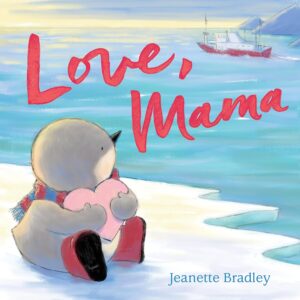 Love, Mama by Jeanette Bradley (January 2018)
Love, Mama by Jeanette Bradley (January 2018)
From Goodreads: “With a heartwarming story and tender illustrations, Jeanette Bradley’s debut picture book Love, Mama is perfect for Valentine’s Day, Mother’s Day, and any day when a child needs a reminder of the strength of a mother’s love.
When Mama leaves her young penguin Kipling, he knows she’ll return home soon–yet he still can’t help but miss her. After all, Pillow Mama won’t read, Picture Mama won’t laugh, and Snow Mama is too cold to cuddle.
But then Kipling receives a special delivery from Mama, including a note that reads:
My love for you stretches across the wide ocean,
through day and night,
from earth to sky
and back again.
And Kipling knows that no matter where Mama is, he is loved. Soon, Mama comes home, and Kipling ends the day where he belongs–right in her arms.”
Pages: 32
Reading Age: 2–6
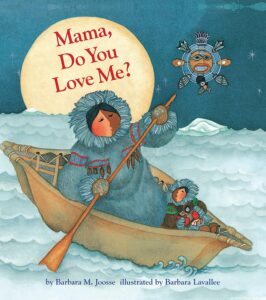 Mama, Do You Love Me? by Barbara M. Joosse, illustrated by Barbara Lavallee (March 2014)
Mama, Do You Love Me? by Barbara M. Joosse, illustrated by Barbara Lavallee (March 2014)
From Goodreads: “Mama, do you love me? Yes I do, Dear One. How much?
In this universal story, a child tests the limits of independence and comfortingly learns that a parent’s love is unconditional and everlasting. The lyrical text introduces young readers to a distinctively different culture, while at the same time showing that the special love that exists between parent and child transcends all boundaries of time and place. The story is beautifully complemented by graphically stunning illustrations that are filled with such exciting animals as whales, wolves, puffins, and sled dogs. This tender and reassuring book is one that both parents and children will turn to again and again.”
Pages: 32
Reading Age: 3–8
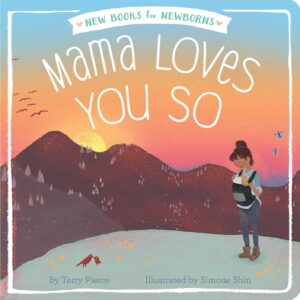 Mama Loves You So by Terry Pierce, illustrated by Simone Shin (March 2017)
Mama Loves You So by Terry Pierce, illustrated by Simone Shin (March 2017)
From Goodreads: “With lilting lullaby text and lovely illustrations, the New Books for Newborns stories are the perfect first books for new parents to share with their little ones right from the start!
Start here. If only raising a child was that easy. It can be difficult in the first year to figure out what’s just right for your baby. But with this new line of books—New Books for Newborns— story time is really that simple. Designed as the first books to start reading with your baby, these just-right stories hit all the right notes with soothing texts, lovely art, and, most importantly, stories meant for sharing any time of the day. Start here. Snuggle up. It’s story time!
This book celebrates a mother’s love trumping even majestic mother nature…a mama’s love is higher than a mountain and deeper than any stream.”
Pages: 32
Reading Age: 3–8
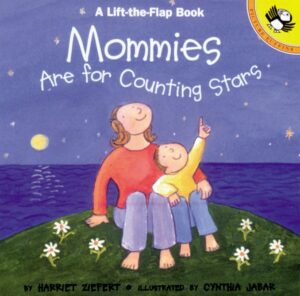 Mommies Are for Counting Stars by Harriet Ziefert, illustrated by Cynthia Jabar (May 1999)
Mommies Are for Counting Stars by Harriet Ziefert, illustrated by Cynthia Jabar (May 1999)
From Goodreads: “A mommy is a special person. She knows just how to kiss a boo-boo to make it feel better and how to do hair-dos. When you need an audience for your puppet show, a mommy will always watch. Lift the flaps and see all the ways a mommy is wonderful. This celebration of mothers is ideal for Mother’s Day and for sharing throughout the year.”
Pages: 16
Reading Age: 3–5
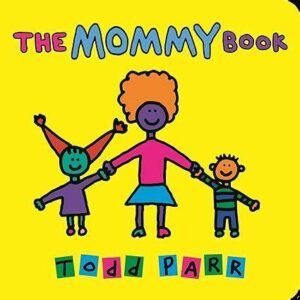 The Mommy Book by Todd Parr (September 2006)
The Mommy Book by Todd Parr (September 2006)
From Goodreads: “Some mommies sing you songs.
Some mommies read you stories.
All mommies want you to be who you are!”
Pages: 32
Reading Age: 2–3
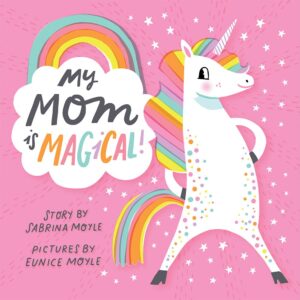 My Mom Is Magical by Sabrina Moyle, illustrated by Eunice Moyle (March 2018)
My Mom Is Magical by Sabrina Moyle, illustrated by Eunice Moyle (March 2018)
From Goodreads: “A joyful tribute to moms from the bestselling creators of Hello!Lucky!
Is your mom more amazing than a billion butterflies?
More sparkly than a universe of stars?
Sweeter than a cloud of cotton candy?
Celebrate all the things that make Mom magical with this joyful board book!”
Pages: 24
Reading Age: 1–3
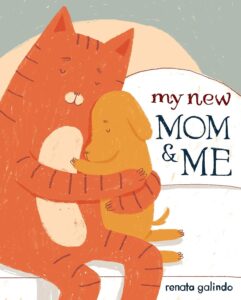 My New Mom & Me by Renata Galindo (March 2016)
My New Mom & Me by Renata Galindo (March 2016)
From Goodreads: “Here is a heartwarming and completely accessible story about adoption, diversity, and acceptance. Told from the point of view of a puppy who is adopted by a cat, this gentle and reassuring tale is perfect for very young readers and listeners.
When the puppy comes to live with his new mom, he is nervous. After all, his mom has stripes and he doesn’t. But his mom says she likes that they look different, and soon the puppy likes it, too. (And who cares what anyone else thinks!)
The puppy’s new mom does all the things other parents do. She plays with him, takes care of him, and sometimes even makes him mad! But that’s okay, because when he’s feeling sad, she knows just what to say.”
Pages: 32
Reading Age: 3–7


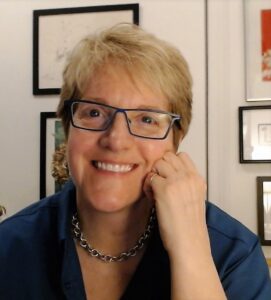 Meet Emma D. Dryden, founder and principal of drydenbks, a premier provider of editorial and coaching services for the children’s publishing industry. Prior to her role as guiding light at drydenbks, Emma was a children’s book editor–first at Random House Children’s Books, and next at McElderry Books, an imprint of Macmillan Children’s Books, where she worked with the legendary Margaret K. McElderry. After Ms. McElderry’s retirement, Emma was made Vice President, Editorial Director of the imprint; in 2005 she became Vice President, Publisher of Atheneum Books for Young Readers and Margaret K. McElderry Books, imprints of Simon
Meet Emma D. Dryden, founder and principal of drydenbks, a premier provider of editorial and coaching services for the children’s publishing industry. Prior to her role as guiding light at drydenbks, Emma was a children’s book editor–first at Random House Children’s Books, and next at McElderry Books, an imprint of Macmillan Children’s Books, where she worked with the legendary Margaret K. McElderry. After Ms. McElderry’s retirement, Emma was made Vice President, Editorial Director of the imprint; in 2005 she became Vice President, Publisher of Atheneum Books for Young Readers and Margaret K. McElderry Books, imprints of Simon 
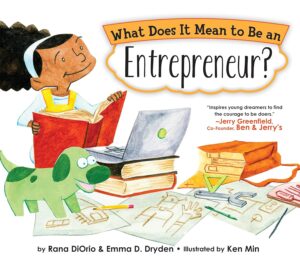
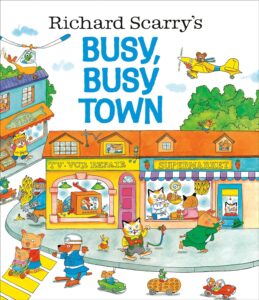
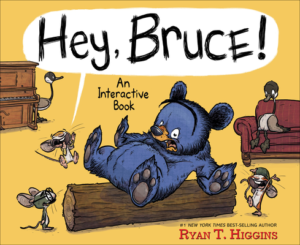
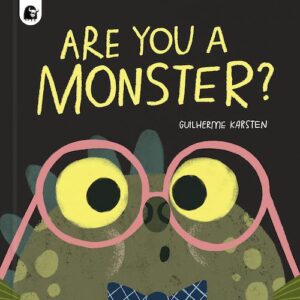
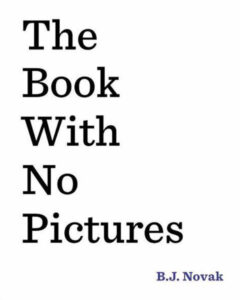
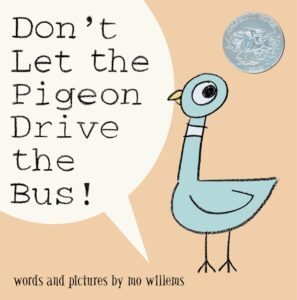
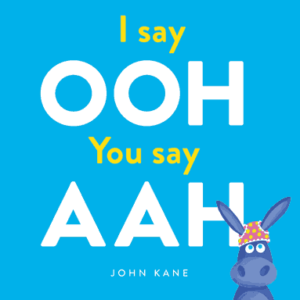
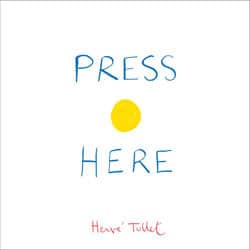
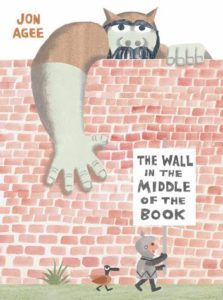
 Welcome back to Rob Sanders, the first person we’ve asked to come back for a second interview. He was the first-ever Author Interview when we launched
Welcome back to Rob Sanders, the first person we’ve asked to come back for a second interview. He was the first-ever Author Interview when we launched 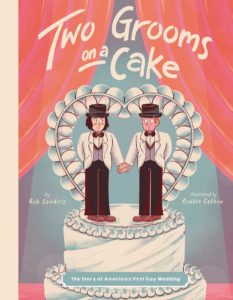
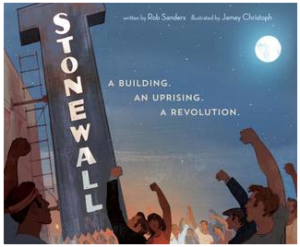
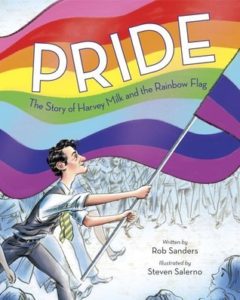
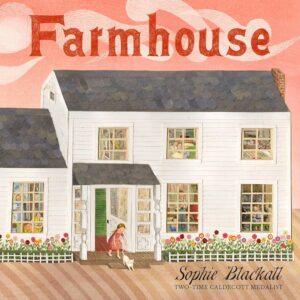
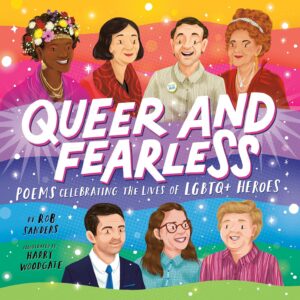
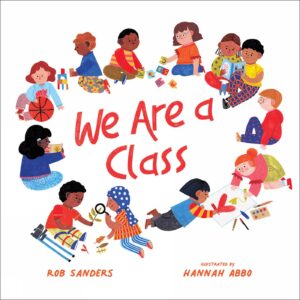
_jfif.jpg)
